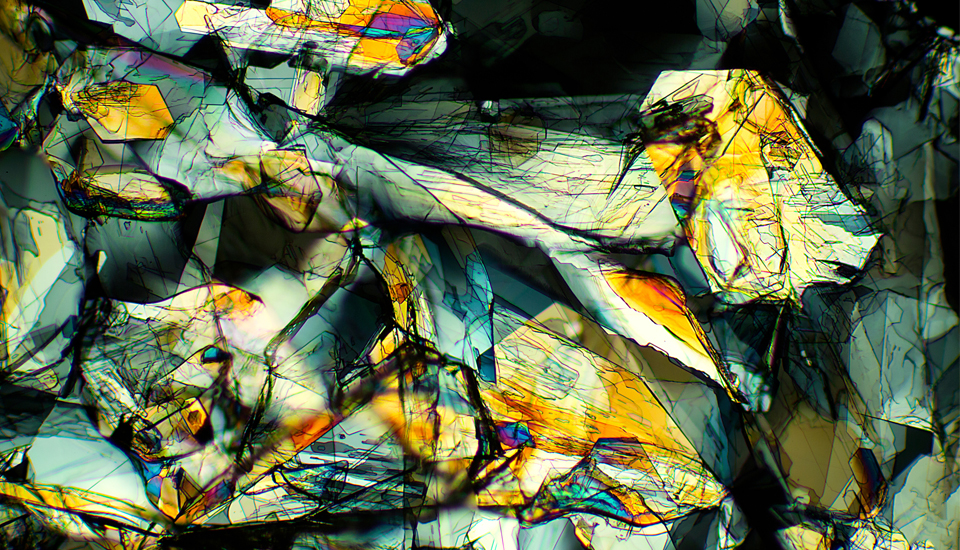What Are Vitamins, Minerals, Antioxidants and Amino Acids? Our Toronto IV Therapy Lounge Explains
POSTED BY TORONTO FUNCTIONAL MEDICINE CENTRE

In our IV Therapy Toronto Lounge, we recommend supplementing with vital nutrients to support optimal health. We may advise a combination of amino acids for one patient; for another, it may be a blend of major antioxidants blend or simply high-dose vitamin C with minerals. Overall, it depends on your unique needs.
A nutritional deficiency can impede physical and mental health. Nutrition is fundamental for the functioning of the human body, especially on a cellular level. By nourishing the body with nutrients, you can help foster healthy aging, cognitive function, liver detoxification, the growth of bones, and muscle function.
Therefore, choosing natural ingredients for an IV drip requires careful deliberation and help from a functional medicine provider or IV therapist. This practitioner can clarify which vital nutrients are suitable for your unique health concerns. One example would be mentioning nutrients with anti-inflammatory components – such as vitamin E – as an adjunct support for reducing inflammation and chronic pain.
But what makes something a nutrient? And what are vitamins, minerals, antioxidants, and amino acids? We scale things back by re-introducing you to different nutrients. In turn, this can help you understand why they’re advisable for your health condition and health goals.
Definitions to know for your next functional medicine session
Making lifestyle decisions is not easy. But when you know the key components of nutrition, you can apply these facts to your daily routine, such as eating foods with key nutrients, selecting proteins for peak performance, or planning doses of nutrients for IV drip therapy. We define the following words: nutrients, vitamins, minerals, antioxidants and amino acids.
What is a nutrient?
A nutrient is a chemical substance that promotes the healthy growth of bones, muscle, brain and child development. Nutrients are crucial for energy production, immune health, breathing, fertility, toxin removal, and other functions.
There are macronutrient and micronutrient categories. Macronutrients are carbohydrates, fats and proteins, and we need sizable amounts to support both the body’s optimal function and configuration. Micronutrients are required for disease prevention, but except for vitamin D, most micronutrients cannot be created by the body. Thus, consuming the recommended amount is advised. Some micronutrients include iron, folate (folic acid), and vitamin D.
What is a vitamin?
A vitamin is a compound our bodies need in modest quantities. There are 13 vitamins recognized by scientists, and they each contribute to optimal functioning. Fat soluble and water soluble are two vitamin groups. Fat-soluble vitamins, which include vitamin A, vitamin E, vitamin K and vitamin D, are accumulated in fat-based tissues and the liver. Water-soluble vitamins, on the other hand, cannot stockpile in the body for a lengthy time. Actually, they’re easily removed via urination! This is why replenishing water-soluble vitamins routinely is recommended. Vitamin C and the B vitamin group are examples.
What is a mineral?
Calcium and zinc are examples of minerals, naturally-occurring substances from water and soil. We need minerals for bodily development, supporting our maintenance of strength, regulating fluids for cellular function, and optimizing the conversion of food to energy. Thus, mineral replenishment is vital for wellness.
Macrominerals and trace minerals are two categories of minerals. We need high levels of macrominerals, which consist of potassium, phosphorus, magnesium, sodium, chloride calcium, and sulfur. We only need miniscule amounts of trace minerals, such as copper iodine, and fluoride, etc. Though they’re mandatory for survival, some individuals have chief health concerns that require consuming less minerals; chronic kidney disease is an example.
What are antioxidants?
They can pose DNA damage, cause “bad” cholesterol to obstruct arteries, trigger cellular damage, and hinder cellular functioning. They can also form oxidative damage, which can be the root of degenerative and chronic health issues.
Antioxidant-rich nutrients, such as the potent antioxidant glutathione, can help fight free radicals and potentially promote an anti-aging effect. They contain anti-inflammatory components and can influence cellular health with positive effects, while promoting DNA repair. Other than glutathione, various amounts of nutrients contain antioxidants, such as vitamin C (ascorbic acid), flavonoids, and polyphenols.
- Much-needed energy
- Poor immune function
- Chronic fatigue syndrome
- Slow recovery time from an athletic performance
- Electrolyte imbalances
- Autoimmune conditions
- Brain fog and other brain function concerns (i.e. memory loss)
- Fatty liver symptoms
- Slow healing of scars
- Poor nail growth
- A hangover symptom (i.e. headaches)
What are amino acids?
Amino acids support the repair of cells and tissue, hair growth, skin cells, neurotransmitters, and the breakdown of food to energy. Numerous amino acids are required to make proteins. So, imagine amino acids as though you were forming words with the alphabet. When you combine amino acids, you construct different types of proteins.
The body can build many amino acids – but it cannot synthesize the top nine that you actually need! These amino acids are called “essential” and they can be consumed through dietary intake. Lysine and tryptophan are some examples.
Regarding the amino acids you can synthesize, these are called “nonessential”. Some of these are aspartic acid (L-aspartic acid), arginine, and serine. Take note: some nonessential amino acids are grouped as “conditional”. What this means is that they’re mainly needed when you’re ill or stressed.
Recommended Reading: 6 Crucial Facts on Chelation Therapy from our IV Therapy Toronto Lounge
Next steps: A visit to the Toronto Functional Medicine Centre
Ask yourself some honest questions: How do your current iron levels hold up? Do your food choices help prevent nutrient deficiencies? How can your physical performance, mental clarity, and muscle recovery be supported with major minerals or essential vitamins?
Visit our private downtown clinic for your personalized service of health care, vitamin IV therapy, naturopathic medicine, and other therapy treatments.
Used as an elective treatment/adjunct support for a treatment plan, IV nutrient therapy can help correct deficiencies, such as those linked to key vitamins and mineral deficiencies. Intravenous vitamin infusions could play a role in improving your daily routine. Because the digestive tract is not required for administering and absorbing IV fluids, intravenous therapies deliver a complete absorption of nutrients. This is why our IV Lounge therapy drips are advised for patients with malabsorption, dysphagia or fear of swallowing pills.
To get an intravenous drip from us, you must become a new patient. An initial consultation is mandatory, in which we run a complete diagnostic session to comprehend your medical history, health goals, lifestyle factors, lab testing, etc. Once key components have been established, we tailor your therapy treatments, which may include Western/Eastern medicine, naturopathy, acupuncture, oral supplementation, lifestyle modifications, and/or IV drip therapy.
Are you lacking any key nutrients? Are nutrient deficiencies the cause of your lack of energy? Let’s find out with our lab testing services. Contact us for IV therapy in Toronto by filling in this form – we’ll get back to you shortly.
Disclaimer: The information in this article is designed for educational purposes only and is not intended to be a substitute for informed medical advice or care. This information should not be used to diagnose or treat any health problems or illnesses without consulting a doctor. Consult with a health care practitioner before relying on any information in this article or on this website.
References
“Amino Acids” from the Cleveland Clinic, reviewed December 22, 2021, viewed on June 26, 2023.
“Antioxidants” from the Harvard T.H. Chan School of Public Health, Nutrition Source, viewed on June 26, 2023.
“Micronutrient Facts” from the CDC (Centers for Disease Control and Prevention), updated February 1, 2022, viewed on June 26, 2023.
“Minerals” from MedlinePlus, from the National Library of Medicine, viewed on June 26, 2023.
Moslehi N, Vafa M, Rahimi-Foroushani A, Golestan B. Effects of oral magnesium supplementation on inflammatory markers in middle-aged overweight women. J Res Med Sci. 2012 Jul;17(7):607-14. PMID: 23798918; PMCID: PMC3685774.
National Center for Complementary and Integrative Health (NCCIH). Antioxidants: In Depth. https://nccih.nih.gov/health/antioxidants/introduction.htm, viewed on June 26, 2023.
Pizzino G, Irrera N, Cucinotta M, Pallio G, Mannino F, Arcoraci V, Squadrito F, Altavilla D, Bitto A. Oxidative Stress: Harms and Benefits for Human Health. Oxid Med Cell Longev. 2017;2017:8416763. doi: 10.1155/2017/8416763. Epub 2017 Jul 27. PMID: 28819546; PMCID: PMC5551541.
Savarino G, Corsello A, Corsello G. Macronutrient balance and micronutrient amounts through growth and development. Ital J Pediatr. 2021 May 8;47(1):109. doi: 10.1186/s13052-021-01061-0. PMID: 33964956; PMCID: PMC8106138.
“What are vitamins, and how do they work?” Medical News Today, medically reviewed by Alexandra Perez, PharmD, MBA, BCGP, by Yvette Brazier, updated on April 14, 2023, viewed on June 26, 2023.
“What’s the Difference Between Micronutrients and Macronutrients?” from Healthline, medically reviewed by Miho Hatanaka, RDN, L.D. By Rachel Nall, MSN, CRNA on December 11, 2019, viewed on June 26, 2023.

